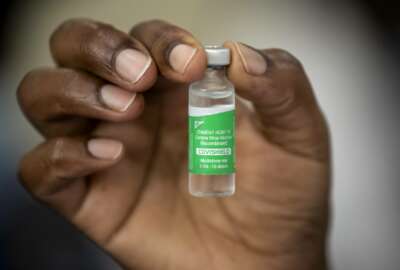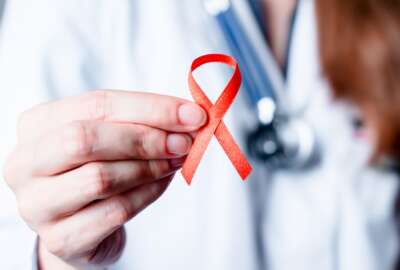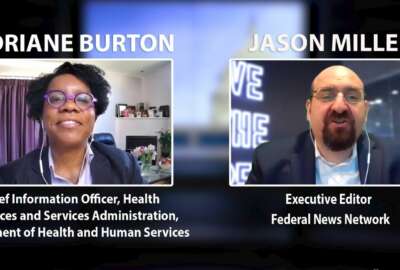Not just a disease of the late 20th Century, HIV/AIDS still gets federal attention
It's no longer the relentless killer it was 40 years ago, but HIV is still around and still infecting people. And it remains a focus of the Health and Human Ser...
It’s no longer the relentless killer it was 40 years ago, but HIV is still around and still infecting people. And it remains a focus of the Health and Human Services Department’s Health Resources and Services Administration (HRSA). For an update, Federal Drive with Tom Temin spoke with the Director of the Division of Policy and Data for HRSA’s HIV/AIDS Bureau, Michael Kharfen.
Interview Transcript:
Tom Temin And as we speak, the nation is observing a particular day, isn’t it?
Michael Kharfen Correct. Sept. 27 is National Gay Men’s HIV Awareness Day. Why we consider every day HIV Awareness Day. On Sept. 27, we make the point to raise awareness about HIV stigma, encourage HIV prevention and treatment among gay, bisexual and other men who have sex with men.
Tom Temin And although HIV potentially can infect anyone, it is still that population you just described that gets most of the cases, fair to say.
Michael Kharfen So it is correct to say that HIV can affect anyone. But about half of the people with HIV are gay or bisexual men who have sex with men. And that somewhat stems from the origins of the epidemic here in the United States. But we have a very diverse epidemic. And so our message is, while today or focusing on gay, bisexual and other men who have sex with men, we still encourage everyone to get tested, know their status, and if they are HIV positive, to connect with care and treatment, to live a long and productive life.
Tom Temin And as we said at the outset, HIV doesn’t necessarily need to lead to the killer, which is AIDS, correct? I mean, it sounds like that is largely under control. What is the status?
Michael Kharfen So that is correct. We’ve made tremendous advances in medical treatment today. You can take one pill a day to be able to treat your HIV. And we know from the Ryan White HIV AIDS program that about 90% of the people who are enrolled in our program actually achieve viral suppression, which is our goal, because then the virus is considered undetectable. And what we have learned through science is that undetectable means that you cannot transmit the virus sexually to your partner. We also call that undetectable equals untransmittable.
Tom Temin Got it. And you mentioned the program. What is the program officially and how does it work?
Michael Kharfen So the program is the Ryan White HIV AIDS program. We’re now in our 33rd year of being able to serve people with HIV and those affected by HIV in the nation. We serve about half of all the people, 576,000 people who are living with HIV in the United States. And we offer a comprehensive system of care for medical treatment and medications to also support services like care coordination, nutrition, transportation, housing assistance, and other needs that individuals with HIV can live very high quality well-being and achieve their individual success.
Tom Temin And you mentioned that there are drugs now available. In fact, I think you see them advertised on television. Every drug in the world seems to be advertised on television these days during the newscasts at night. And I’m old enough to still watch them. But are these affordable in general or these are not super expensive types of things. What has been the advance in the medicine and the treatment side that makes it affordable?
Michael Kharfen So the medication has gone through various different formulations in ways that can make it very simple and easy for people to take. We now even have something called long acting injectable, which means you can get one shot a month and that’s all you need to do in order to treat your HIV. So the medications are covered under all health insurance plans. Also, of course, public health insurance plans like Medicaid and Medicare. But if someone doesn’t have insurance or is underinsured, the Ryan White HIV AIDS program does provide medication assistance. We call it the AIDS Drug Assistance Program, to ensure that anyone who needs it can have access to these lifesaving medications. And to that point, what we’ve known from the advances in medications that if somebody is diagnosed with HIV, they can live a standard life span. If they are taking their medication every day and are seeing their medical providers on a regular basis and taking advantage of the supports that they need.
Tom Temin We’re speaking with Michael Kharfen. He’s director of the Division of Policy and Data for the HIV AIDS Bureau at the Health Resources and Services Administration, part of HHS. And let me ask you this. Between the infection and the onset of a disease, which could be, I guess, still potentially fatal. What’s the mechanism by which people can discover an infection and therefore get these modern medicine? That will keep it suppressed and in effect, disappear.
Michael Kharfen So testing is the way to do that and to test on a regular basis, which is at least once a year we recommend testing. So there’s many different ways to get tested through your medical provider, through community based testing locations. And even now there’s home testing available to determine your status. And we’ve now taken this new approach, which we call status neutral, which is a approach where these start with the test and then you learn what your status is. So if you’re HIV negative, then we encourage you to look at prevention options such as pre-exposure prophylaxis or prep, which is the taking of an HIV medication once a day safe, easy to use, and that prevents you from getting HIV. And if your result is HIV positive, then we want to connect you right away to care, including as much as starting your treatment that very same day because the medications are so safe and so effective that we can start you that same day that you learn your diagnosis to get on your treatment.
Tom Temin And over the years, has the approach that the United States took in the federal government granting and the health research apparatus, which is pretty big, took to develop these drugs that are now, as you say, widely available and work quite well and are safe. What have been the lessons learned that can transfer to other viral types of diseases? Because it looks like whatever is going on with the COVID virus, which I imagine is an utterly different branch of virology than the HIV virus. But are there any lessons learned that can transfer here?
Michael Kharfen Well, actually, there are. In fact, one of the reasons why we were able to get a COVID vaccine so quickly is because many of the researchers working on it were part of what is known as the HIV Vaccine Trials Network, which is run by the National Institutes of Health. So we already had a research platform here in the United States that could look at options around addressing viruses. In fact, that Trials Network is working on an HIV vaccine. And then there’s also, NIH supporting trials that are going on right now on a cure. And so what we remain optimistic that and encourage that this science could lead us to that point of having a vaccine and or a cure. We also believe that we have the tools today in order to achieve what we call the end of the HIV epidemic. In fact, we have a national initiative called Ending the HIV Epidemic in the U.S. And with the combination of these terrific medications that with somebody with HIV, it means they suppress the virus to undetectable. And medications that can prevent someone getting HIV. That combination will enable us to make HIV rare and have anyone living with HIV to live a full and healthy life. And HRSA is a key part of that initiative. We’ve supported 49 different jurisdictions in the country, which represent about half of all the new HIV cases in the United States. And so we believe that many of the lessons that we’ve learned from the Ryan White HIV AIDS program can be transferred to communities across the country and even intensified in areas that remain. We can accelerate our efforts towards ending the epidemic.
Tom Temin And the final question, it’s still an epidemic in other parts of the world. And what demand do you have for learning and knowledge from some of the nations that still suffer from it in a much greater degree than the United States does now?
Michael Kharfen HIV is still very much present, globally. Of course, we’ve been very fortunate to have programs like PEPFAR, the President’s Emergency Plan for AIDS Relief, which has been made tremendous advances in getting access to HIV medications and in countries across the world. And that kind of collaborative effort, which is also a hallmark of the Ryan White HIV AIDS program, which is what we partner with community based organizations and states and cities. That same premise has been part of PEPFAR and the Global Fund and other efforts that are making sure that people have access to medications, that they have access to medical care and the services that they need to support themselves in making sure that they are able to take that medication and be able to lead productive lives.
Copyright © 2024 Federal News Network. All rights reserved. This website is not intended for users located within the European Economic Area.
Tom Temin is host of the Federal Drive and has been providing insight on federal technology and management issues for more than 30 years.
Follow @tteminWFED






